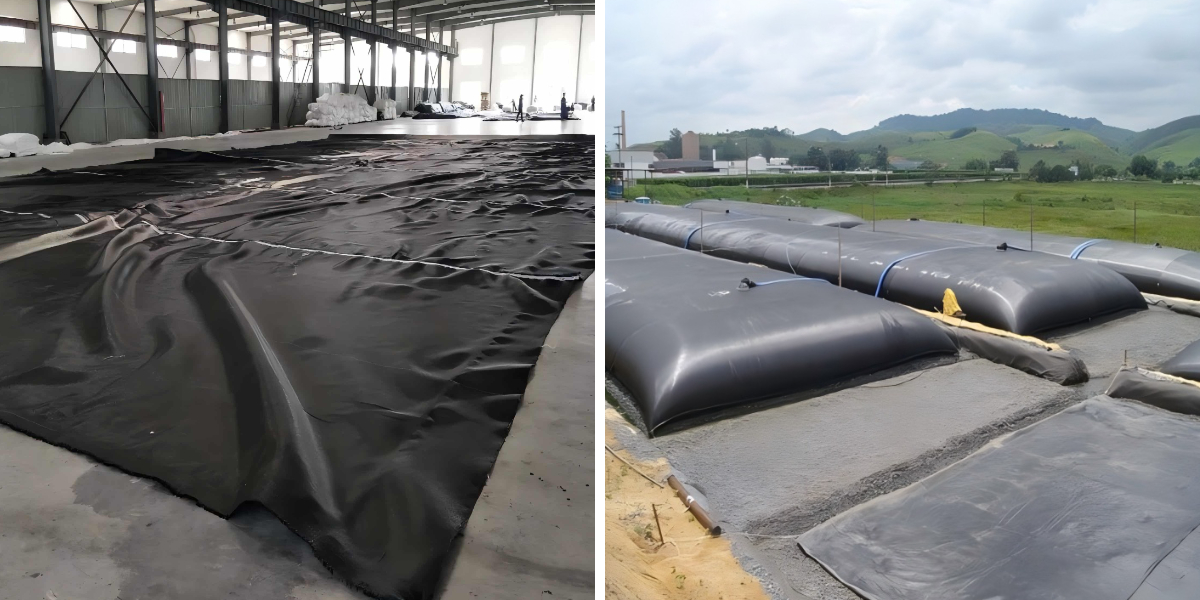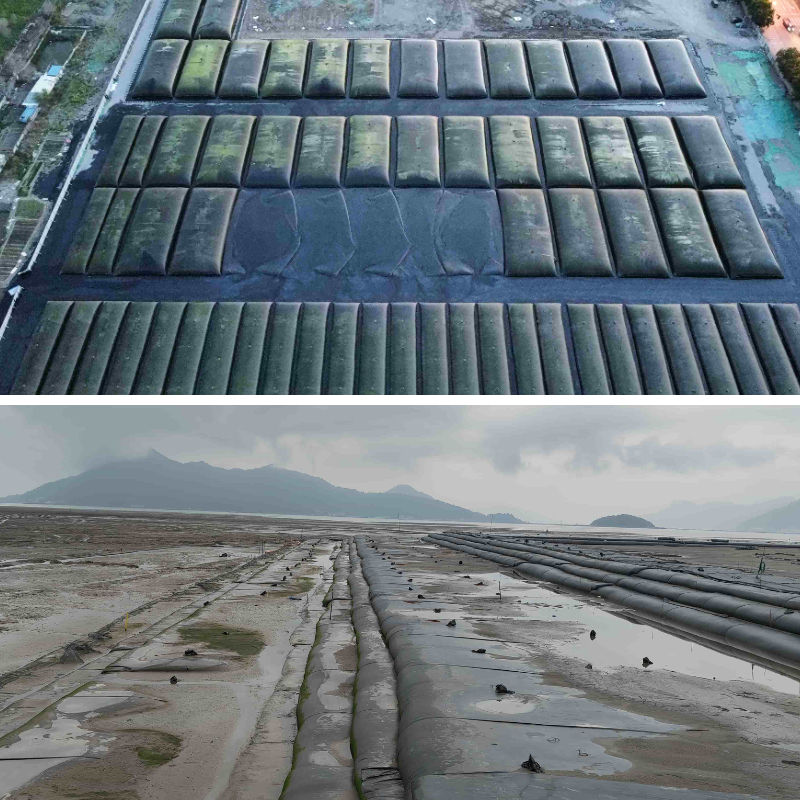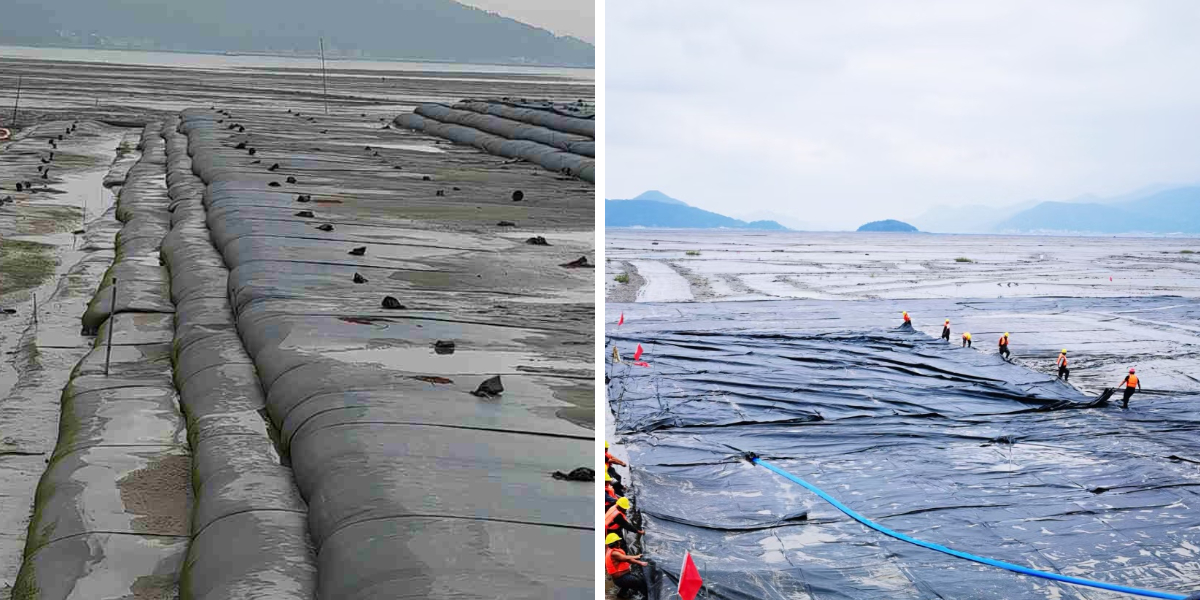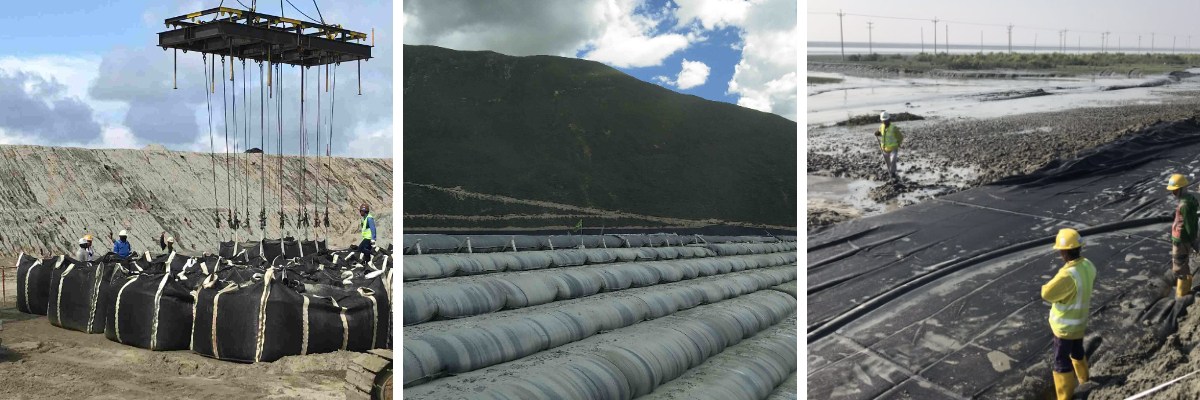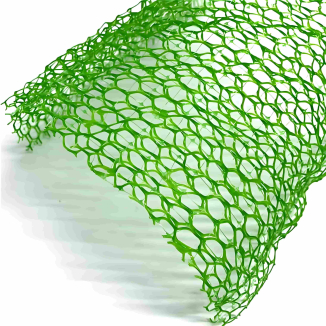Geotextile Tubes for Coastal Erosion Control: Best Practices & Project Examples
Introduction
Understanding the Menace of Coastal Erosion
Coastal erosion is a world mission that poses a significant threat to coastal regions. It is a herbal process, alternatively human activities and climate trade have accelerated its pace. The continuous pounding of waves, rising sea levels, and the impact of storms are causing coastlines to recede at an alarming rate. In many areas, this has led to the destruction of essential infrastructure such as roads, bridges, and buildings. For instance, in some coastal towns, houses have been lost as the land beneath them is regularly washed away via the sea.
Moreover, coastal erosion has a profound impact on the delicate coastal ecosystems. Beaches, dunes, and wetlands, which are domestic to a severa range of flora and fauna, are being damaged. These ecosystems play a quintessential role in defending coastlines from in addition erosion, performing as natural buffers against the forces of the sea. When they are disrupted, the whole coastal area becomes more vulnerable. The loss of these habitats additionally capability a decline in biodiversity, affecting countless species that depend on them for survival. In addition, coastal erosion can lead to the illness of freshwater sources as saltwater intrudes, which has implications for every human and animal populations that rely on these water supplies.
Unveiling Geotextile Tubes
Geotextile tubes, also recognized as Geotubes, furnish a practical and effective solution to combat coastal erosion. These are large, cylindrical structures made from high - power geotextile materials. The geotextile cloth is designed to be permeable, allowing water to drain out while holding the sediment inside. This exclusive property makes Geotubes highly suitable for coastal applications.
Geotubes are generally stuffed with domestically available sediment, such as sand or dredged material. Once filled, they are placed alongside the shoreline in strategic locations. Their large measurement and weight create a steady barrier that can stand up to the force of waves and currents. By absorbing the energy of the waves, Geotubes help to limit the erosive impact on the shoreline. They can also be used to assemble or fortify dunes, beaches, and breakwaters, providing long - time duration safety to the coast. In essence, Geotubes act as a flexible and sustainable alternative to regular challenging - engineering coastal protection methods, such as concrete seawalls, which can be costly to assemble and keep and may have a negative have an effect on on the herbal coastal environment.
The Science Behind Geotextile Tubes
Structure and Composition
Geotextile tubes are constructed from high - strength geotextile fabrics, which are engineered textiles designed for use in geotechnical engineering applications. These fabric are typically made from synthetic polymers such as polypropylene or polyester. Polypropylene geotextiles are well-known due to their exceptional resistance to chemicals, UV radiation, and abrasion, while polyester geotextiles offer immoderate tensile power and dimensional stability.
The geotextile fabric is woven or non - woven. Woven geotextiles are made by interlacing warp and weft yarns, creating a sturdy and durable structure with excessive tensile electricity in both directions. Non - woven geotextiles, on the other hand, are fashioned by using bonding or entangling fibers together, which results in a more bendy cloth with good filtration properties.
Inside the Geotubes, they are filled with sediment. This sediment acts as the core material, offering mass and stability to the structure. The sediment can be sourced from various locations, such as local beaches, riverbeds, or dredged substances from harbors. The combination of the geotextile fabric and the sediment creates a robust gadget the area the fabric contains and protects the sediment, and the sediment offers the Geotube its weight and shape to resist the forces of the sea.
Function in Erosion Control
Erosion Control Tubes play a multifaceted role in stopping coastal erosion. One of their primary aspects is to dissipate wave energy. When waves approach the coastline, they raise a significant extent of energy. As the waves hit the Geotubes, the large, flexible shape of the tubes absorbs and disperses this energy. The cylindrical shape of the Geotubes lets in the waves to ruin in opposition to them, reducing the height and pressure of the waves that achieve the shore. This is similar to how a natural seaside or dune device would soak up wave energy, but Geotubes can be strategically positioned in areas the place herbal defenses are lacking or damaged.
Geotubes additionally act as a sediment barrier. The geotextile fabric, with its cautiously designed pore size, allows water to drain out whilst retaining the sediment inside. This is fundamental in preventing the loss of seashore sand and other coastal sediments, which are oftentimes washed away by sturdy waves and currents. By retaining the sediment, Geotubes help to maintain the integrity of the shoreline. They can be used to construct or repair beaches, dunes, and special coastal features. For example, when placed in a row alongside a eroding beach, the Geotubes can trap sand that would in any different case be carried away, gradually constructing up the beach and imparting a buffer against future erosion.
In addition, Geotubes can enhance the steadiness of the coastal slope. When set up on a sloping shoreline, they add weight and concord to the soil, reducing the likelihood of slope failure due to wave movement or water saturation. This balance is further improved with the aid of the interlocking nature of the crammed Geotubes when they are placed adjacent to each and every other, developing a continuous and stable barrier in opposition to the forces of erosion.
Dewatering Bags: A Crucial Component
Role in the Process
Dewatering Bags play a pivotal function in the Geotube device for coastal erosion control. Their primary feature is to aid in the elimination of excess water from inside the Geotubes. When Geotubes are stuffed with sediment, there is regularly a significant quantity of water combined in. Dewatering Bags assist to separate and drain this water, which is essential for numerous reasons. Firstly, via decreasing the water content, they enhance the common steadiness of the Geotube structure. Water - logged Geotubes can be extra prone to motion and deformation below the pressure of waves and currents. With the water removed by capacity of the Dewatering Bags, the sediment interior the Geotubes compacts more effectively, providing a denser and higher steady barrier against coastal erosion.
Secondly, the proper functioning of Dewatering Bags is quintessential for the lengthy - time period integrity of the Geotubes. Excess water trapped inside can motive the geotextile cloth to degrade greater quickly due to extended stress and moisture - associated stress. By efficiently dewatering the Geotubes, Dewatering Bags assist to prolong the lifespan of the complete system, making it a more value - nice answer for coastal protection in the lengthy run.
Working Mechanism of Dewatering Bags
Dewatering Bags function primarily based on the principle of filtration and gravity - pushed drainage. These baggage are made from a permeable geotextile material similar to that of the Geotubes however with unique properties optimized for water removal. When positioned internal the Geotubes, the Dewatering Bags enable water to pass via their cloth whilst retaining the quality sediment particles.
The pores in the dewatering bag material are cautiously designed to be small enough to stop the break out of sediment however large sufficient to allow the free waft of water. As the Geotube is filled with the sediment - water mixture, the water starts offevolved to seep into the Dewatering Bags due to the strain differential. Once inside, gravity motives the water to drain out through the permeable fabric. This drainage technique can be in addition enhanced in some instances by the use of exterior pumping systems, particularly in situations the place the herbal drainage charge is too slow to meet the challenge requirements.
The Dewatering Bags work in concord with the Geotubes. The Geotubes supply the large - scale shape and containment for the sediment, whilst the Dewatering Bags center of attention on the vital task of water removal. This coordinated effort ensures that the ultimate shape is a steady and effective coastal erosion manipulate measure. For example, in a beach nourishment mission using Geotubes, the Dewatering Bags will work usually to dewater the filled Geotubes, permitting the sand sediment to settle and form a affiliation base for the new beach area, which can then higher withstand the erosive forces of the sea.
Best Practices for Deployment
Site Assessment
Before deploying Geotextile Tubes, a whole site evaluation is of utmost importance. The first aspect to assume about is the coastline topography. A precise topographical survey helps to identify areas that are most inclined to erosion. For example, areas with steep slopes are more probably to experience mass dropping due to wave action, while low - mendacity areas may be at hazard of inundation during excessive tides or storms. By understanding the topography, engineers can determine the optimal placement of Geotubes to grant maximum protection.
The contrast of the coastline topography additionally involves inspecting the shape and orientation of the shoreline. Irregular seashores with bays and headlands can experience particular wave patterns, and Geotubes need to be positioned in a way that accounts for these variations. High - choice satellite imagery and LiDAR (Light Detection and Ranging) science can be used to create accurate 3D fashions of the coastline, which are invaluable in the evaluation process.
Another critical aspect is the assessment of water go with the flow conditions, together with wave height, wave frequency, and modern velocity. Waves are the primary erosive pressure alongside the coast, and grasp their characteristics is essential. Wave data can be gathered the use of wave buoys, which measure wave height, period, and route over time. For instance, in areas with high - energy waves, such as uncovered ocean coastlines, large and extra robust Geotubes may moreover be required to face up to the force of the waves.
Current velocity moreover performs a significant role. Strong currents can transport sediment and cause erosion, and they can moreover have an effect on the stability of the Geotubes. If the current pace is too high, it may additionally be necessary to install greater measures, such as breakwaters or groins, in aggregate with the Geotubes to reduce the impact of the modern-day and make sure the long - term effectiveness of the erosion manipulate system.
Installation Techniques
Proper installation methods are key to ensuring that Geotubes attribute effectively in coastal erosion control. The first step in the installation method is the placement of the Geotubes. They have to be laid out in a way that follows the herbal contour of the shoreline as closely as possible. This helps to create a continuous and excessive high-quality barrier against wave action. For example, when using Geotubes to construct a seaside berm, they are typically placed in a row parallel to the water's edge, with each tube overlapping the adjoining ones barely to stop gaps.
The connection between individual Geotubes is additionally critical. High - energy geotextile straps or connectors are many times used to join the tubes together. These connectors need to be in a position to stand up to the forces exerted by the waves and the movement of the sediment interior the tubes. The joints must be inspected thoroughly after set up to ensure a invulnerable connection. In some cases, extra reinforcement, such as the usage of double - layered connectors or stitching the joints with heavy - duty thread, may also be employed to enhance the electricity of the connection.
During the filling process of the Geotubes, care have to be taken to make sure even distribution of the sediment. 不均匀的填充 can lead to uneven settling and doubtlessly reduce the effectiveness of the Geotubes. Specialized filling equipment, such as slurry pumps, is often used to fill the tubes with a combination of sediment and water. The go with the float rate and pressure of the filling system choose to be carefully controlled to attain a regular fill density. Additionally, the sediment used for filling should be of an appropriate grain measurement and composition. Coarser - grained sediments, like sand, are often preferred as they provide higher steadiness and resistance to erosion in contrast to finer - grained sediments.
Maintenance and Monitoring
Once installed, Geotube systems require regular renovation and monitoring to ensure their lengthy - term effectiveness in controlling coastal erosion. Regular inspections are indispensable to detect any symptoms of damage or degradation. Visual inspections have to be carried out at least as soon as a year, and more often in areas that are uncovered to extreme climate conditions or immoderate - energy wave action. During these inspections, the integrity of the geotextile material is checked for any signs of tearing, puncturing, or UV degradation. The connections between the Geotubes are moreover inspected to ensure they are nonetheless secure.
Monitoring the performance of the Geotubes in phrases of erosion manage is equally important. This can be done by using measuring adjustments in the shoreline position over time. GPS (Global Positioning System) technology can be used to precisely measure the vicinity of the shoreline at regular intervals. If there are signs of endured erosion in areas the vicinity the Geotubes are installed, it may indicate a hassle with the Geotube system, such as a breach in the material or a failure in the connection between tubes. In such cases, immediate repairs or reinforcements are necessary.
Another aspect of monitoring is the evaluation of the sediment inner the Geotubes. Over time, the sediment may settle or be redistributed, which can affect the balance and effectiveness of the Geotubes. Sampling the sediment internal the tubes periodically can help to determine if any modifications in its composition or density have occurred. If necessary, more sediment can be added to the tubes to maintain their integrity and functionality. In addition, monitoring the water degrees and wave conditions in the area can provide precious files about the forces acting on the Geotubes and help to predict plausible troubles earlier than they occur.
Noteworthy Project Examples
Project 1: [Project Location 1]
[Project Location 1] faced severe coastal erosion troubles due to its uncovered position alongside the ocean. The vicinity had a lengthy - standing issue of seashore degradation, with the sand being constantly washed away by using sturdy waves and high - electricity tides. This led to the loss of treasured beachfront property and the degradation of the local coastal ecosystem.
To tackle these problems, Geotextile Tubes had been deployed. A comprehensive web page evaluation was once first carried out, which protected measuring the wave heights, which averaged round 2 - three meters during ordinary climate stipulations and could reach up to 5 meters all through storms. The topography of the shoreline used to be additionally mapped in detail, revealing areas with steep slopes that were particularly inclined to erosion.
Based on the assessment, Geotubes have been strategically placed alongside the eroding beach. The Geotubes had been filled with domestically dredged sand, which was a fee - tremendous answer as it utilized the available sediment in the area. Dewatering Bags have been used during the filling technique to make sure that the Geotubes have been properly dewatered and stable. The installation group cautiously laid the Geotubes in a row parallel to the water's edge, with every tube overlapping the adjacent ones by about 30 centimeters to create a continuous barrier.
After the set up of the Geotubes, the results were remarkable. The beach, which had been receding at a fee of about 1 - two meters per year, confirmed signs of stabilization. Over the subsequent few years, the beach even started out to progressively rebuild as the Geotubes trapped the sand that would in any other case have been carried away by the waves. The neighborhood ecosystem additionally started out to recover, with the return of various seashore - structured species such as shorebirds and sand - residing invertebrates.
Project 2: [Project Location 2]
[Project Location 2] was a coastal place that used to be experiencing great erosion due to the combined consequences of sea - stage upward jab and the construction of nearby infrastructure that disrupted the herbal sediment flow. The vicinity had a popular marina and several coastal resorts, and the erosion was as soon as threatening the steadiness of the structures and the safety of the visitors.
The decision used to be once once made to use Geotextile Tubes to protect the coastline. The undertaking commenced with a certain study of the water flow conditions in the area. Current velocities had been measured, and it was found that there were sturdy tidal currents that ought to attain speeds of up to 1.5 meters per second. These currents were exacerbating the erosion hassle through carrying away the sediment.
Geotubes have been designed to withstand these sturdy currents. They were made from a excessive - power geotextile material with enhanced UV resistance, as the region obtained a excessive amount of daylight at some point of the year. The Geotubes had been filled with a mixture of sand and gravel, which supplied more stability.
During the installation, a special technique was as soon as used to anchor the Geotubes firmly to the seabed. Heavy - obligation anchors were driven into the seabed at everyday intervals alongside the length of the Geotubes to prevent them from being dislodged by the sturdy currents. Dewatering Bags had been once more an essential section of the process, making sure that the stuffed Geotubes were steady and had the crucial power to resist the forces of the sea.
As a end end end result of the project, the erosion rate in the area was decreased by more than 80%. The marina and the coastal resorts have been no longer at danger of being damaged by the eroding coastline. The increased steadiness of the shoreline additionally led to an increase in tourism, as traffic had been attracted to the now - protected and greater scenic coastal area.
Conclusion
Recap of Key Points
In summary, Geotextile Tubes, or Geotubes, provide a pretty effective answer for coastal erosion control. Their special structure, composed of excessive - strength geotextile cloth crammed with sediment, permits them to dissipate wave energy, act as sediment barriers, and enhance the balance of the coastal slope. Dewatering Bags, an indispensable issue of the Geotube system, play a crucial function in getting rid of excess water, which is critical for the stability and prolonged - term integrity of the Geotubes.
Proper web site assessment, along with the assessment of coastline topography and water float conditions, is the basis for profitable Geotube deployment. Installation techniques, such as careful placement, invulnerable connection between tubes, and even sediment filling, are key to making sure the performance of the Geotubes. Regular maintenance and monitoring, such as visual inspections, shoreline function measurements, and sediment sampling, are necessary to warranty the long - time length effectiveness of the Geotube systems. The project examples in addition demonstrate the actual - world effectiveness of Geotubes in stabilizing coastlines, defending infrastructure, and merchandising ecological recovery.
Future Perspectives
Looking ahead, the future of Geotube technology in coastal safety appears promising. With ongoing tendencies in geotextile materials, we can expect to see Geotubes with more advantageous durability, greater resistance to UV radiation and chemical degradation, and improved filtration properties. These improvements will now not fully extend the lifespan of Geotubes but additionally make them greater effective in challenging coastal environments.
Moreover, as local local weather change continues to pose a threat to coastlines worldwide, the demand for sustainable and cost - super coastal erosion control solutions like Geotubes will likely increase. There is in addition potential for further research and enchancment in the integration of Geotubes with different coastal protection methods, such as the use of natural resources or the implementation of residing shoreline techniques. This could lead to more whole and environmentally pleasant coastal protection strategies.
It is hoped that more coastal communities and engineering duties will reflect onconsideration on the use of Geotubes in their coastal erosion control efforts. By doing so, we can better protect our treasured coastal resources, safeguard infrastructure, and preserve the exclusive ecosystems that thrive alongside our coastlines for future generations.
Contact Us
Company Name: Shandong Chuangwei New Materials Co., LTD
Contact Person :Jaden Sylvan
Contact Number :+86 19305485668
WhatsApp:+86 19305485668
Enterprise Email: cggeosynthetics@gmail.com
Enterprise Address: Entrepreneurship Park, Dayue District, Tai 'an City,
Shandong Province


